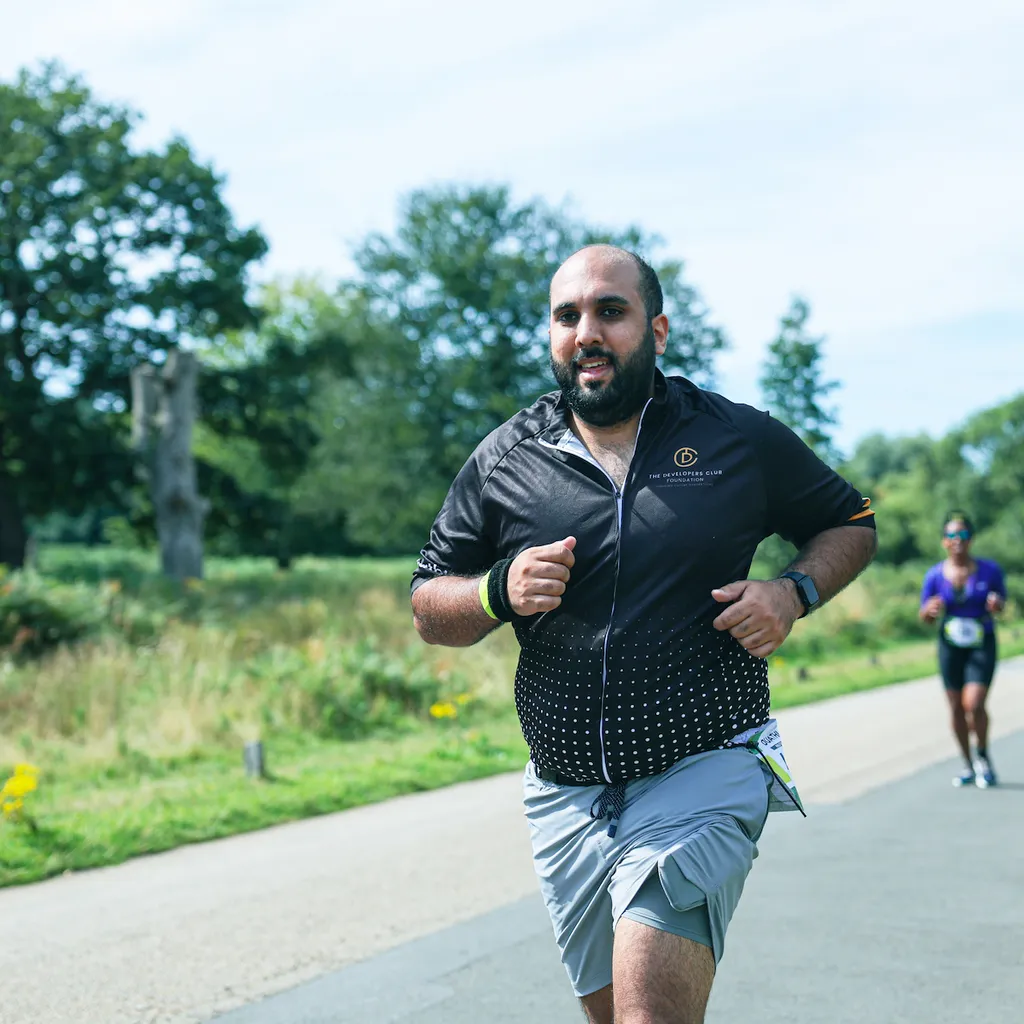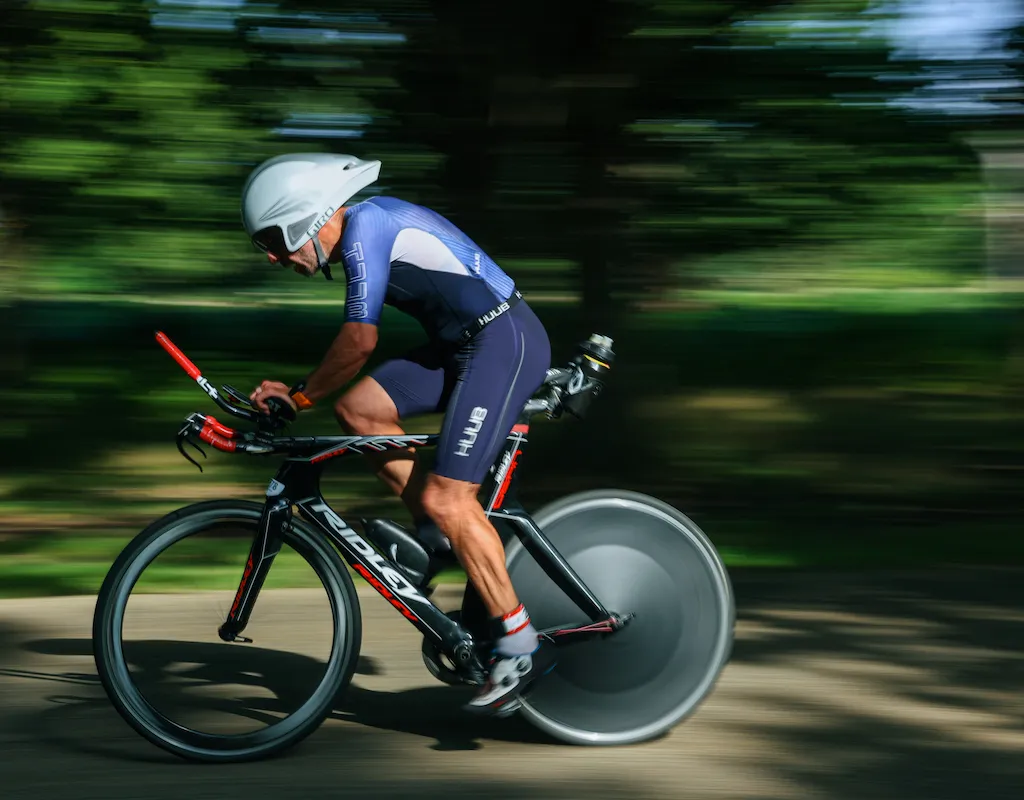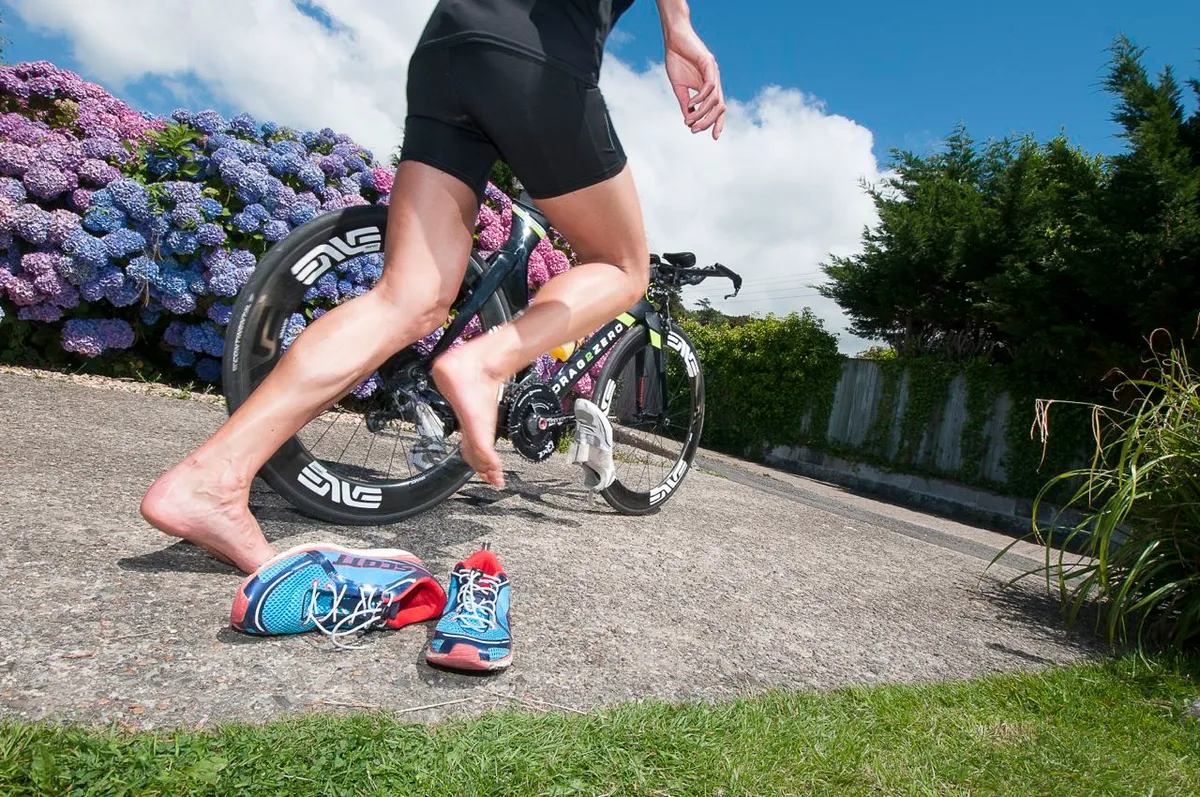Duathlon no longer needs to be thought of as a triathlon’s little brother. It’s a thriving sport with hugely competitive age-group racing and offers multisport athletes a chance to keep racing through the year, with many events taking place right through the traditional off-season.
The physical benefits are exactly the same as triathlon, the styles of training are incredibly similar giving a variety of training sessions to focus on endurance, power, speed and technique.
Duathlon gives you the chance to maintain a high level of quality in your training schedule all year round and can offer the chance to increase your focus on bike and run through the winter months, if either of these are a triathlon weakness.
And with duathlon having a run bias, it’s a great way to increase winter miles.
Just like triathlon, you can find a wide variety of race-course options, including off-road (such as the Escape To Afan Duathlon in Wales), so there’s a chance to get the mountain bike out as well.
Of course, the off-season doesn’t need to be jam packed with racing, but even by including a couple of duathlons it can keep you focused by having shorter term goals that help you to hit the spring time in great shape and with great confidence in your fitness.
Sound like a good idea? If you’re tempted, then read on for my top 10 tips to getting the most out of duathlon training and racing through autumn and winter, including everything from suggested sessions and easy ways to save time on race day to gear and nutrition advice.
10 ways to smash a duathlon

1. Go long to go short
Going over the race distance in your training can really help to make the race day feel like a short workout. Including lower-intensity, endurance-focused sessions that are 30-40% longer than race distance are perfect for this.
These workouts can form the basis of your longer weekend routines and, where possible, try to simulate the terrain and elevation you expect on race day.
2. Mix up your run sessions
There’s no getting away from it that duathlon requires you to be run fit in order to race well, but this should be seen as an opportunity to work on any weaknesses in your running fitness or form.
Your weekly running schedule should include a variety of styles of run workouts, including long steady aerobic runs; tempo runs that take you up towards race pace for extended periods of 1-3km; and then finally some threshold/speed work that is faster than current race pace and really stresses you physically. Variety is key to success.
3. Fine-tune your fuelling strategy
Use key training sessions to trial and fine-tune your nutrition strategy. The off-season is a great time to experiment. The first run is possible to get through on just hydration but the bike is a chance to practise taking on energy gels or even an energy bar.
Use the final 10mins of the bike to fuel ready for the run; if the final run is 5km or shorter then taking onboard a gel in the final 10mins of the bike is adequate for the rest of the race.
And topping up with a drink in transition may be enough to see you to the finish line.
4. Just use run shoes

If the race distances are very short, and if you’re newer to the sport and still experimenting with cycling shoes, then why not try doing the whole race in your run shoes?
If the bike section is 10-15km then using a set of good quality toe clips could allow you to still cycle effectively but save you anxious minutes in transition wrestling with a changeover of shoes. The actual mount and dismount will also be quicker in running shoes.
5. Do this brick session: 6km R/20km B/3km R
Run 1: Attempt to hold a sustainably hard pace and feel in control working at RPE 8. Do not slow down.
Bike: This should be a hard ride of 20km with 4-5 efforts working very hard for 2km each, really trying to increase speed and power while remaining in control. You’ll already be warmed up from the run and so can go straight into some fast riding.
Run 2: The objective is to run at the same pace that you held in the first run, so this now becomes a challenging 3km on tired legs. The initial 500-800m of this run cannot be too fast or there is the risk of blowing up.
6. Get the pacing right
Arguably the toughest and most important skill is getting the run pace correct in the first run. This is so different to the swim in a triathlon and can very often lead to major problems if you get it wrong.
You do need to work hard and you do need to be involved in the race but you must pace yourself in the knowledge there is lots more to come. Practising this in the longer run/bike sessions is crucial. Decide on a target pace to stay within and be disciplined to do this.
7. Know the course

Take some time to research the race course and train to its demands, especially if it’s a particularly hilly or very flat course. Once you know the terrain you’ll be dealing with, create your training sessions to match the course and this will help you get a better and much more accurate understanding of pacing.
You’ll also be training specifically so that there are no surprises on race day, which should help reduce nerves.
8. Do this brick session: 10km R/45km B/5 x 1km R
Run 1: Focus on sticking to a sustainable pace that you can hold for the full 10km.
Bike: Start comfortably and then include 2 x 15km efforts at slightly faster than target race pace.
Run 2: 5 x 1km at faster than your target race pace taking 45secs full recovery between intervals.
9. Stick to ‘your’ targets
Race your own race and stick to your own race plan. During the first run, because you can see the other athletes it can be easy to get involved in racing the competition rather than racing the course.
However, starting like this can ruin a well put together strategy. Use your sports watch to help you diligently stick to your targets instead of attempting to run shoulder to shoulder with others.
10. Hone your transitions skills

As is the case with triathlon, a key part of having a successful race is moving through transition well. During your brick sessions use this as a chance to fine-tune your transition skills and increase the speed with which you can switch between sports.
As you develop better skills you may progress to using faster mount and dismount styles (such as the flying mount). Have all of your equipment laid out just like you would on race day and repeat, repeat, repeat.
Weekly duathlon training plan
Monday: Swim 20min technique; 25min deep-water running
Tuesday: Bricks 3-6 x (10min turbo/spin bike followed by a 6min run). Work on speeding up your transitions on to and off the bike .
Wednesday: Bike 20min warm-up then 4-6 x (4min high-intensity training in aero position with 2-4min recovery sat up) followed by 10min relaxed brick run then 5min cool-down bike.
Thursday: Duathlon 10min aerobic, relaxed run; 30-40min bike; and finish with a 10min run.
Friday: REST DAY (optional 30min deep-water running if you’ve missed any sessions earlier in the week).
Saturday: Bike 1.5hr aerobic session, using aerobars as much as possible.
Sunday: Run 10min turbo warm-up and 10min run; then 3-5 x 1km at 10km race pace with 60-90sec jog recovery, followed by 10min cool-down bike.
Top image credit: Limelight Sports Club
